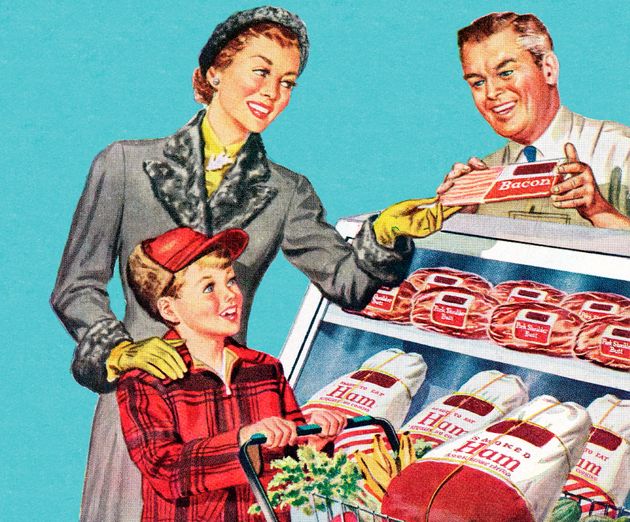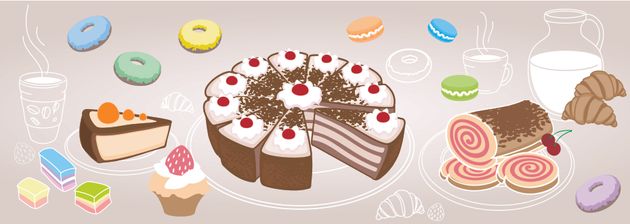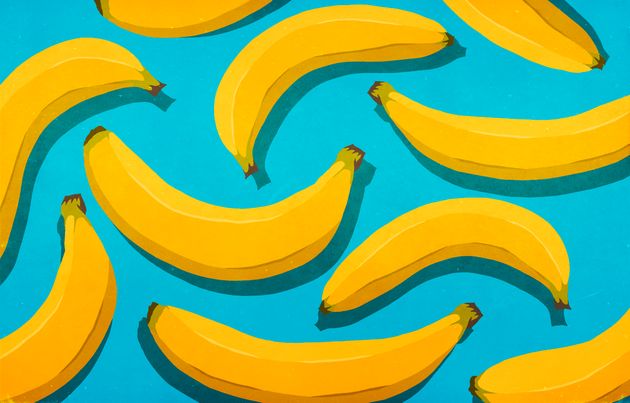
First, some questions: What’s a meal, what’s a snack, how often are you supposed to eat them and at what time? If you eat a sandwich over the kitchen sink, is that a “smart snack?” Is it a good idea to go through every “snack-size bag” in the pantry at 45-minute intervals? And does food eaten in the car even count at all?
One paragraph in, and already, this is getting complicated. Given our current lives and um, mental situations, it’s easy to see how it can all get a little twisted.
That’s why we reached out to nutrition experts to help you get a handle on snacks, meals and even those folded-over bologna sandwiches.
Calm down; snacks are fine.
The nutritionists we talked to give snacks a thumbs-up. In fact, they see them as an important part of a healthy diet.
“Snacks are a small bridge to the next meal,” registered dietician nutritionist Vicki Shanta Retelny told HuffPost. “While there’s no one perfect eating approach, eating balanced meals and snacks at consistent times during the day keeps your blood sugar in better control, keeps you from overeating and keeps cravings at bay.”
“I wholeheartedly believe in snacks,” another RDN,Amy Gorin, told HuffPost. “It’s really difficult to go for hours and hours without eating, and you shouldn’t have to. I recommend that people eat every three to five hours.”
Eating regularly is a necessity, these nutritionists say. (And yes, the food you eat in your car does count, it turns out.)
“Balanced snacking that includes protein, fibre and other nutrients will help keep blood sugar in an optimal range,” RDN Amanda Frankeny told HuffPost. “That matters because low blood sugar invites exhaustion and can make you more likely to crave sugary or fatty foods. Munching on nourishing snacks helps keep blood sugar stable.”
Timing matters for meals and snacks.
“I personally follow the top tip I give my clients, which is to establish a regular eating schedule and stick with it,” registered dietician Cynthia Sass told HuffPost. “For many, that means something like breakfast at 8am, lunch at noon, a snack around 3pm and dinner around 6pm I tell people to set their cell phone alarm with reminders, if needed, until they settle into a routine.”
Sass explained that this isn’t just a routine for routine’s sake. There are actually some health benefits to eating at the same regular times. “One of the biggest benefits is appetite regulation,” she said. “After a week or so, your body adjusts to the pattern, which results in becoming hungry at expected meal times. This can help people better tune in to actual hunger cues, and it can improve the ability to distinguish between true hunger and the desire to eat, which may be triggered by boredom or stress.”
There are other reasons to try sticking with set times, including helping you control blood sugar and insulin, avoiding spikes and crashes to keep energy level all day long, and even improving your digestive function.

Nothing good is going to come from starving yourself, especially in the afternoon, the nutritionists cautioned. “Eat a yogurt before dinner, because it’s protein-rich and can help you ward off hunger if your dinnertime meal isn’t until later,” RDNVanessa M. Rissetto told HuffPost. “Imagine if you eat lunch at 12 p.m. and don’t eat dinner until 8pm You’ll be a ravenous monster, and you might not make choices in line with whatever your goals are.”
If you find yourself in an intensifying bad mood as the day drags on, you really might need a snack. “Eating at regular intervals results in steady, even energy, which can elevate your mood,” Sass told HuffPost. In addition to making you nicer to be around, those regular snacks might prevent a junk food spiral, since an elevated mood alone can prevent overeating, she said.
Here’s how nutritionists snack.
“I’ve found that just eating three meals doesn’t work for me, so definitely I’m a grazer, which works out because I’m pretty active,” Frankeny said. “Also, I never avoid any food that I’m craving. Sometimes, I want the crunch of veggies and dip, and sometimes it’s barbecue potato chips that make a perfect snack for me. I might try cheese with crackers, maybe with a spot of jam, or chips and salsa. Lately, I’ve been into these really great jalapeño puffs. They’re like cheese balls with a monster hit of spice. I like them because the puffs are big and flavourful. After a couple of handfuls, I’m satisfied, and they don’t leave me with a heavy stomach.”
RDBarbara Ruhs told HuffPost, “One of my faves is rice crackers and hummus. And to get more good fats in my daily routine, I use avocado as a swap for other spreads. Sometimes, I’ll smear a tortilla with guacamole and top it with chopped tomatoes.”
“I try to eat snacks that are what I call ‘a perfect 10,’ so that each one provides taste, energy and nutrition,” RDNNeva Cochran told HuffPost. “I look for snacks that match my nutrition needs. Some can be higher-calorie to give me enough energy in the day, and some are lower-calorie choices with more fibre and protein, to help me feel full and satisfied.”
Cochran has some go-to snacks that keep her going. “Light microwave kettle popcorn is one of my favourites. An entire popped bag has only 110 calories. Another good choice is sliced pears or apples paired with a protein like peanut butter or cheese. At night, I have a small bowl of light ice cream topped with fat-free, low sugar chocolate syrup and a couple of spoonfuls of peanut butter Chex cereal.”
Here’s how nutritionists fit snacks into their workouts and workdays.
“Before workouts, I eat things like peanut butter and jelly toast, a banana and peanut butter, yogurt, frozen berries and flax seeds or cereal,” Frankeny said. “I live in Boulder, Colorado, so I exercise outdoors a lot. During long hikes or runs on the mountain trails, I eat bars that include protein, carbohydrates and quick-acting sugar.”

“Being an athlete has largely influenced how I think of snacks, so I see them as fuel that helps to keep my energy up until meal time,” Ruhs said. “If I’m about to work out, I generally don’t eat big meals, because I don’t like feeling stuff slushing around in my stomach as I’m hiking, cycling or on the tennis court. I grab a banana, which is my favourite fruit for sports, or sometimes a bar or individual peanut butter packet. Then I’m on the run — literally.”
The timing of snacks is important not just for exercise, but for work, too. Ruhs has found that big meals don’t help her mental performance. “It makes sense, because your body directs blood towards the stomach to help with digestion and absorption, so there’s less oxygen from the blood for your brain. So if I’m getting ready for a full day of conference calls or meetings, I’ll have breakfast at least an hour beforehand,” to give her body time to digest the food.
Here’s what to do if your kids’ snacking is crazy pants right now.
“Parents can provide kids six meal opportunities: three meals, and two to three snacks,” Frankeny said. “If kids skip a snack, that’s a learning opportunity for the parents and the kids, who can be allowed to feel a little hungrier by their next mealtime. Parents have to be confident enough to say, ‘I’m really sorry, but you should have filled your tummy at snack time. You can wait until dinner.’
“Grazing in kids can be a code word for ‘eat whenever they want.’ Instead, parents should provide a meal schedule or routine and decide when their kid will eat. When children graze throughout the day, it can make it harder for them to listen to their hunger and fullness signals. With designated snack times, however, kids are often more willing to eat what they need, try a new food and stick to better-for-them options.”
Snack alert! You might just be thirsty.
If you’re ready to dive into a bag of snacks right now, take a moment to consider whether you’re actually thirsty. “Hunger is often confused with thirst,” Ruhs said. “Keep yourself hydrated throughout the day and reach for a glass of water or a can of seltzer before grabbing a snack. You might be surprised to realise you’re not really hungry after all.”
Gorin said, “When I feel like I want to eat but I’m not actually hungry — hey, it happens — I’ll brew myself a cup of coffee or tea to keep my tastebuds occupied.”
One snack isn’t the end of the world.
Above all, the nutritionists urged people to remember that eating is an everyday thing, with plenty of opportunities to do right by yourself and keep yourself nourished.
“If you eat three meals and two snacks per day, that’s about 35 chances per week to eat well. If you do that 85% of the time, you can meet your goals,” Rissetto said. “Aim to snack on things that help keep you full, but also have a lot of nutrient density.”
Frankeny agreed: “Never feel guilt or anxiety if you choose a so-called ‘unhealthy’ food. No food is inherently bad. Allow all foods into your diet, so you don’t feel so out of control when you give yourself permission to eat what have been off-limit foods.”


